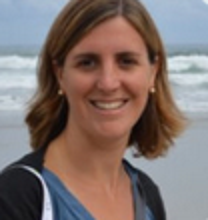
The EIT Health consortium includes a total of 144 leading companies, universities and research centres from across 14 European countries whose aim is to develop ecosystems of innovation in health and also to generate new ideas in business, support start-ups and involve students in the range of programmes driven by EIT Health.
The Spanish hub was formally created on 31 July, 2015, and its headquarters is located in the Parc Científic in Barcelona. The EIT Health Spain is made up of entities in the areas of research, education and business creation from 5 regions (Catalonia, Madrid, Valencia, the Basque Country and Andalusia). The AQuAS is one of the associated members of EIT Health and is part of the Spanish hub, EIT Health Spain.
Why did all this come about?
In 2008, the European Union created the European Institute of Innovation and Technology, an independent EU body to promote innovation and entrepreneurship in Europe via the “KIC”, Knowledge and Innovation Communities in different disciplines.
There are several very different communities: EIT Climate-KIC, EIT Health, EIT Digital, EIT RawMaterials, EIT InnoEnergy and EIT Food.
 However, we put the focus on the health community. The mission of EIT Health is to enhance the competitiveness of European industry while also improving the quality of life of citizens and the sustainability of public health systems.
However, we put the focus on the health community. The mission of EIT Health is to enhance the competitiveness of European industry while also improving the quality of life of citizens and the sustainability of public health systems.
In practice, all this translates into calls which EIT Health makes annually in order to finance innovative projects where proposals can be presented that meet the requirements of the European Institute of Innovation and Technology.
In addition, EIT promotes networking and training activities aimed at its members to develop new projects and establish synergies which favour innovation in health.
 What role does the AQuAS play within the EIT Health framework?
What role does the AQuAS play within the EIT Health framework?
The AQuAS began participating in this community of knowledge and innovation in 2016 with a Big Data in health training programme as part of the Summer School.
In 2017, the Co-Creating Innovative Solutions for Health project (CRISH) was launched. It is an educational programme that brings all the stakeholders together – including patients and caregivers – with the aim of learning how to participate, co-create and co-design top research projects and innovative projects in healthcare through patient experience, responsible research and innovation.
It is important to point out that this project has been running over the last two years by means of combined training with the aim of providing knowledge, skills and tools on patient experience methodology, responsible research and innovative components, entrepreneurship elements and reciprocity and co-design methods. All in all, the aim is to foster a better collaboration among disciplines and specialities so as to anticipate and jointly address emerging trends in health and ageing.
Another project initiated in 2017 was the Health Movement project with the aim of creating an ecosystem of the community’s stakeholders to help people lead a healthy lifestyle, adhere to treatments and receive personalised attention by means of Social Impact bonds, a financing instrument, a subject which we will delve into deeper on another occasion on this blog.
During 2018, new health technology assessment projects have been initiated. Examples are the ApneaBand project, where a protocol will be designed with which to assess the implementation of an innovative device to detect and measure sleep apneas and the LiverScreen project in which a new, cheap, fast and non-invasive method used to diagnose cirrhosis at an early stage will be assessed.
In short, there are a lot of innovative projects in the pipeline with which to continue learning and adding value.
Post written by Marcel Olivé and Gemma Cabré.
